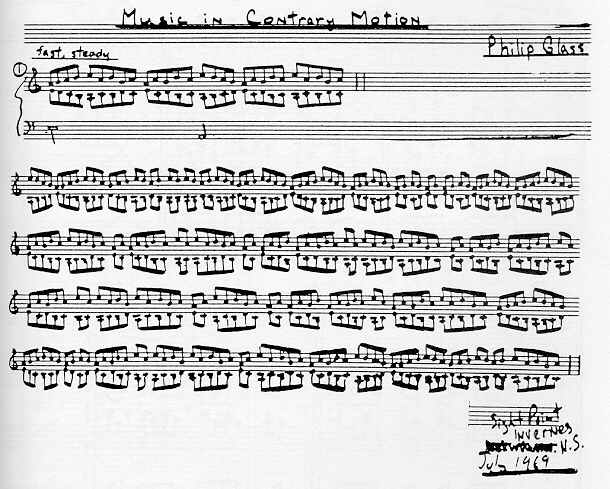

Both Music in Contrary Motion and Strung Out come from Glass' earliest repertoire (1960s), when he was most focused on rhythm and on the sounds of individual instruments (he has since moved on to orchestral settings). Music in Contrary Motion is perhaps more visually that aurally striking in the symmetry of the notation. It is easy to pick out where the pivotal points, or points of symmetrical reflection reside. For example, in the first line of the piece (analysis is difficult because Glass, as a minimalist deconstructionist, does not use traditional "measure" notation) the pattern of the top line is as follows: EDCBaBCDE. The lower case "a" represents the line of symmetry over which the pattern is reflected. The composition follows a similar pattern throughout, both on the top and bottom lines of notes. Aurally, the piece mimics the repetition of scales that a pianist must diligently repeat in order to warm up before playing an actual piece of music. With Music in Contrary Motion Glass plays a trick on the listener by transferring what is traditionally considered the "warm up" into the realm of "the composition." Yet this makes sense, because what Glass provides is the framework for all forms of music (as all music, no matter how atonal is scalar), and this piece serves to legitimate the framework and reinforce its inherent complexity.
Page author: Kirsten Lodal